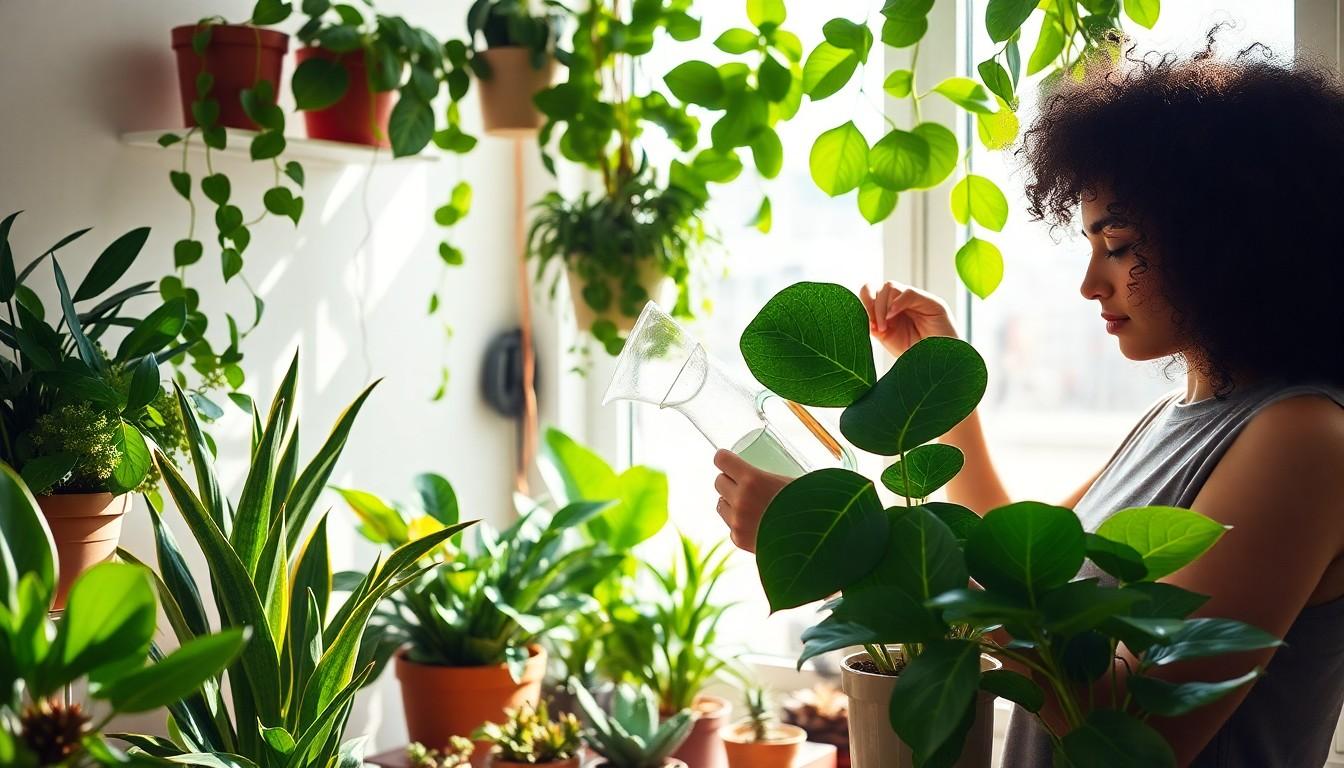Bringing a little green into your home can transform any space from drab to fab. House plants not only add a splash of color but also purify the air and boost mood—who wouldn’t want to breathe easier and feel happier? Whether you’re a seasoned plant parent or just starting your leafy journey, finding the right companions for your home can be a delightful challenge.
Benefits Of House Plants
House plants provide numerous advantages, improving both physical and mental well-being. They enhance living spaces while contributing to overall health.
Improved Air Quality
Indoor plants play a significant role in purifying the air. They absorb carbon dioxide and release oxygen through photosynthesis. Certain plants, such as snake plants and peace lilies, effectively remove toxins like formaldehyde and benzene. NASA research indicates that plants can reduce indoor pollutants by up to 87% within 24 hours. Regularly adding house plants increases oxygen levels, promoting respiratory health and vitality.
Stress Reduction
House plants create a calming environment, reducing stress levels. Studies show that simply being around greenery can lower blood pressure and anxiety. Caring for plants encourages mindfulness and can act as a therapeutic activity. Research indicates that spending time with indoor plants can enhance mood and overall happiness. Placing plants in workspaces boosts productivity and focus, contributing to a more positive atmosphere.
Popular House Plants List

House plants enhance living spaces and offer numerous benefits. Below are popular categories to consider.
Low Maintenance Options
Succulents require minimal care and thrive in bright light. Snake plants tolerate low light and infrequent watering. ZZ plants flourish in various conditions, making them versatile choices. Pothos grow quickly and adapt well to indoor environments, requiring only occasional pruning. Spider plants remove toxins and are easy to propagate. These options suit various lifestyles, appealing to busy individuals or those new to gardening.
Hardy Plants For Beginners
Cast iron plants withstand neglect and thrive in low light. Peace lilies bloom indoors, signaling when they need water with drooping leaves. Rubber plants adapt well to different humidity levels, making them perfect for new plant parents. Dracaenas offer diverse varieties with unique foliage, allowing for artistic expression. Fiddle leaf figs provide dramatic visual interest and tolerate some indoor variability. These hardy plants help build confidence and foster a love for indoor gardening.
Unique House Plants
Unique house plants can transform a home with their distinctive appearances and characteristics. They add an element of interest that standard options often miss.
Rare Varieties
Rare plant varieties capture attention with their unusual traits and limited availability. For instance, the Variegated Monstera offers eye-catching patterns on its leaves. Another example is the Blue Chalk Stick, known for its vibrant blue color and unique texture. Collectors often seek out the Alocasia Dragon Scale, admired for its striking leaf structure. These plants not only enhance decor but also create a sense of exclusivity, making them appealing for enthusiasts.
Exotic Selections
Exotic selections bring a touch of far-off lands into the home. The Bird of Paradise, with its vibrant flowers, resembles a flying bird, creating a tropical vibe. Similarly, the Splendid Monstera has large, fenestrated leaves that evoke an island atmosphere. Notable plants like the African Violet surprise with their colorful blooms throughout the year. The Zebra Plant, adorned with unique striped patterns, adds unique visual interest. Such options enrich indoor spaces while showcasing diverse botanic wonders.
Care Tips For House Plants
Caring for house plants involves understanding their specific needs. Proper attention to water and light significantly influences plant health.
Watering Guidelines
Watering varies based on plant type. Succulents require less frequent watering, generally once every two weeks. In contrast, tropical plants like peace lilies thrive with consistent moisture, often needing water once a week. Checking the soil’s top inch helps determine when to water. Overwatering leads to root rot, while underwatering causes wilting. Use room temperature water to avoid shocking the roots. Establish a routine or utilize reminders, keeping consistency to support growth.
Light Requirements
Light needs differ widely among house plants. Snake plants tolerate low light, making them suitable for dim areas. On the other hand, succulents and cacti flourish in bright, direct sunlight. Place plants near windows where they receive adequate light without the risk of scorching. Rotate plants regularly for even growth; this helps prevent leaning towards the light source. Use sheer curtains to diffuse harsh sunlight for sensitive plants. Observing specific light preferences optimizes photosynthesis and encourages healthy development.

